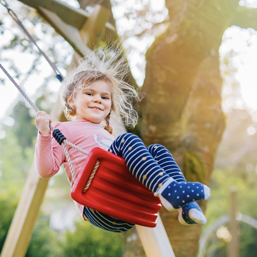
Movement – it’s so simple, yet critical for a healthy life. Movement provides us with healthy joints, muscles and bones; allows us to run, jump, swim and go on adventures; promotes learning, concentration and increases our mental wellbeing. Our society is moving less and less, and the results are severely impacting our health. Studies have shown that children today may live up to five years less than their parents due to inactivity and the associated health risks.
Children today are less physically literate than the generations before, which can lead to adverse effects in adulthood. Physical literacy is having the competence, confidence and motivation to be physically active for life, and is as important as literacy in music, language and mathematics.
When we give children the opportunity to participate in as many different types of movement in as many environments as possible, we give them the chance to build their physical competence. Once kids have the competence, they develop confidence in themselves and their abilities. This confidence spurs the desire to continue to move and remain physically active for their lifetime.
Developing movement skills creates the foundation for many lifelong skills, not just for sports. For example, a child who develops balancing skills will enjoy hiking, snowboarding, yoga, or paddleboarding, or a child who develops running skills will be able to play soccer, lacrosse, or tag with their friends. If you weren’t given the opportunity to develop physical competence and confidence as a child, it may be more challenging for you to find the courage to join an adult sport league, or enjoy certain activities with your own children.
Adding more movement into our lives can seem a little daunting, but it doesn’t have to be. Here are some fun and easy ways to add more movement into your and your family’s life:
Humans are designed to move and our bodies thrive the more movement we incorporate. Physical activity also pumps up our brain’s feel-good neurotransmitters which can help us manage stress, improve our mood and sleep, increase our self esteem, and help to lower symptoms of anxiety and depression.
So my question for you is this – how are you going to move today?
Sarah has a Bachelor of Physical Education from the University of Alberta and was the supervisor for the City of Calgary’s Mobile Adventure Playground. As the owner of Playful Adventures (IG: @playfuladventures), she is passionate about bringing back unstructured, loose parts, outdoor play. You can reach her at This email address is being protected from spambots. You need JavaScript enabled to view it..
See our related articles:
Calgary’s Child Magazine © 2024 Calgary’s Child